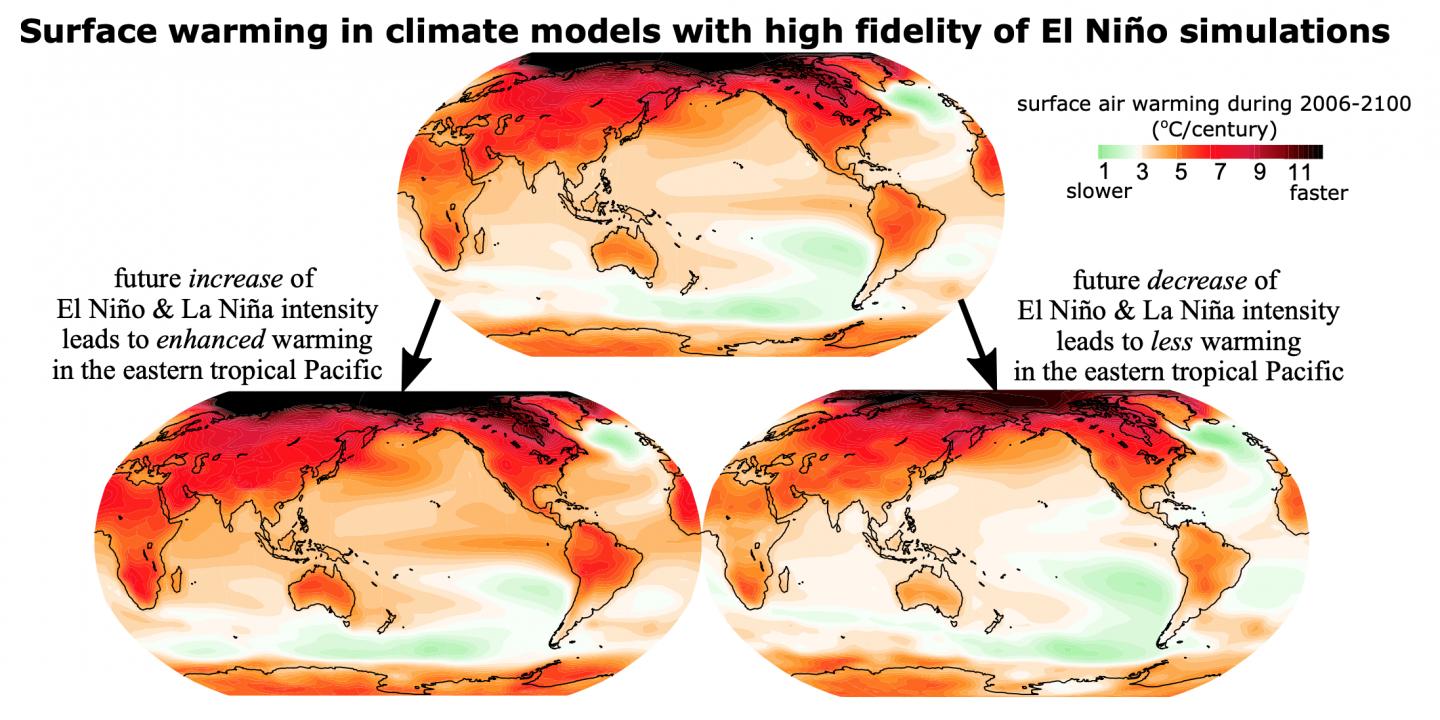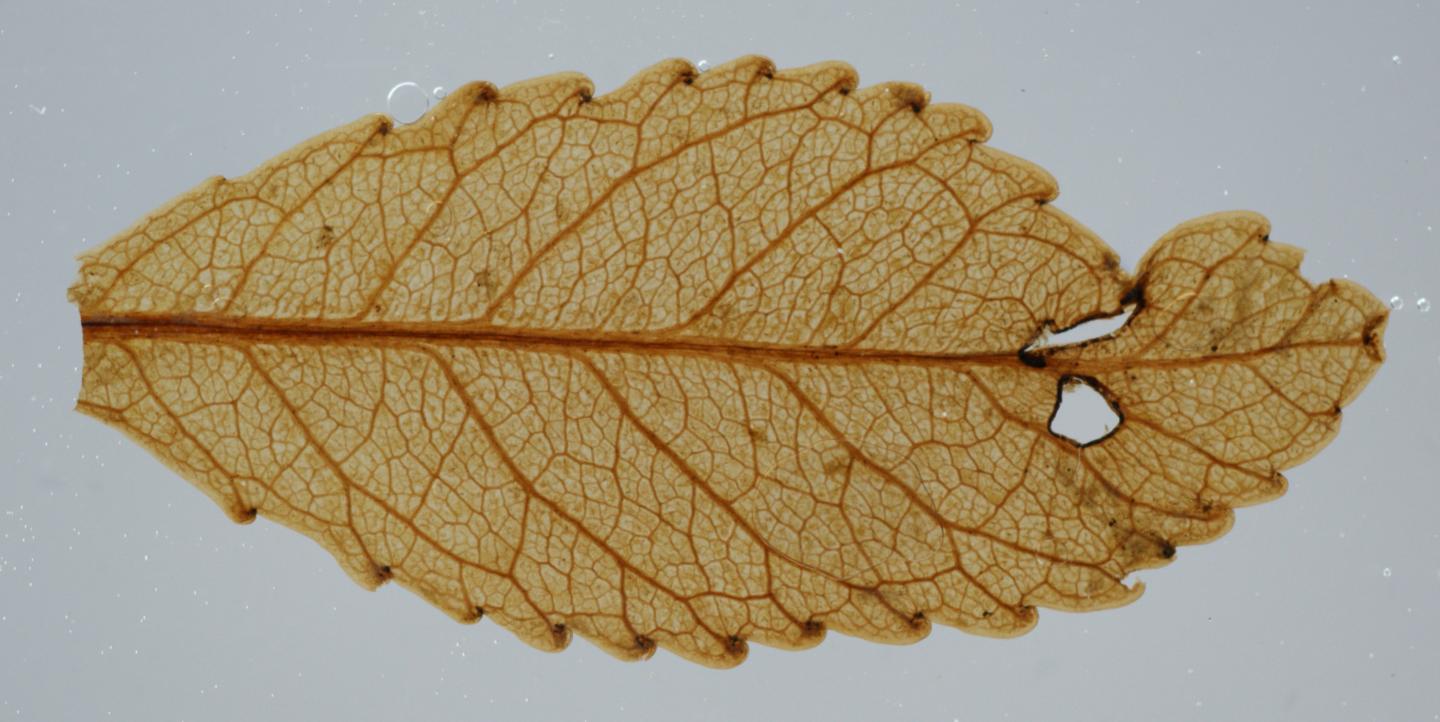Stanford scientists track tiny atmospheric ripples using data from internet-beaming balloons
Tag: TEMPERATURE-DEPENDENT PHENOMENA
New Research Provides Solution for the ‘Dust Bowl Paradox’
Almost 100 years ago, there was a strange, slow-motion takeover of the Great Plains. During the Dust Bowl of the 1930s, as a historic heatwave and drought swept the middle of the United States, there was a dramatic shift in…
NASA-NOAA satellite provides a nighttime view of new Atlantic tropical depression
NASA-NOAA’s Suomi NPP satellite provided a nighttime view of the Atlantic Ocean hurricane season’s latest tropical cyclone off the coast of North Carolina. Ocean swells from the depression are affecting coastal North Carolina today, Sept. 1. Tropical Depression 15 formed…
NASA finds Typhoon Maysak moving near Okinawa, Japan
Typhoon Maysak continued to move through the Northwestern Pacific and was closing in on Japan’s Okinawa Island when NASA’s Terra satellite obtained a visible image of the storm. Maysak’s eye is not expected to go over the island, but pass…
NOAA/NASA’s Suomi NPP satellite shows two views of California’s smoky skies
NOAA/NASA’s Suomi NPP satellite captured two images that tell the story about the smoke coming off the fires in California. One instrument on the provided a visible image of the smoke, while another analyzed the aerosol content within. The images…
Warmer, acidifying ocean brings extinction for reef-building corals, renewal for relatives
Human carbon emissions already devastating harder coral reefs, while softer-bodied relatives will persist and diversify for millions of years
Sea level rise from ice sheets track worst-case climate change scenario
Ice sheets in Greenland and Antarctica whose melting rates are rapidly increasing have raised the global sea level by 1.8cm since the 1990s, and are matching the Intergovernmental Panel on Climate Change’s worst-case climate warming scenarios. According to a new…
How’s the transit weather?
U researchers study how weather news impacts public transit ridership

Fidelity of El Niño simulation matters for predicting future climate
A new study led by University of Hawai’i at Mānoa researchers, published in the journal Nature Communications this week, revealed that correctly simulating ocean current variations hundreds of feet below the ocean surface – the so-called Pacific Equatorial Undercurrent – during El Niño events is key in reducing the uncertainty of predictions of future warming in the eastern tropical Pacific.

New analysis reveals where marine heatwaves will intensify fastest
The world’s strongest ocean currents, which play key roles in fisheries and ocean ecosystems, will experience more intense marine heatwaves than the global average over coming decades, according to a paper published today in Nature Communications by researchers from the ARC Centre of Excellence for Climate Extremes at the University of Tasmania and CSIRO.
NASA sees wind shear still battering tropical storm Iselle
NASA infrared imagery shows wind shear continued to batter Tropical Storm Iselle in the Eastern Pacific Ocean for the second day. NASA’s Infrared Data Finds Push of Winds Tropical cyclones are made up of hundreds of thunderstorms, and infrared data…
NASA Terra Satellite examines Tropical Storm Hernan’s relocated center
NASA infrared imagery revealed a burst of strength in Tropical Storm Hernan, located over the Gulf of California. At 12:30 a.m. EDT, NOAA’s National Hurricane Center or NHC noted that recent satellite-based wind data indicated Hernan was located northeast of…
NASA Terra Satellite sees development of Tropical Storm Maysak
NASA infrared imagery revealed several areas of strong thunderstorms around the center of the recently organized Tropical Storm Maysak. Tropical Depression 10W formed during the early morning hours on Aug. 28 and quickly organized and strengthened into a tropical storm.…
Fidelity of El Niño simulation matters for predicting future climate
A new study led by University of Hawai’i at Mānoa researchers, published in the journal Nature Communications this week, revealed that correctly simulating ocean current variations hundreds of feet below the ocean surface – the so-called Pacific Equatorial Undercurrent –…
NASA-NOAA satellite nighttime imagery tracks Tropical Depression Laura over US
A new animation of nighttime imagery from NASA-NOAA’s Suomi NPP satellite followed the path of former Hurricane Laura from its landfall in southwestern Louisiana to its movement over the Mississippi Valley. As Laura tracks across the eastern U.S., it is…
A chiral surprise in the rainforest
Reversed ratio of chiral volatile organic compounds over the Amazon rainforest reveal insects as unexplored important source of forest emissions
Evidence of hibernation-like state in Antarctic animal
Researchers discover Fossil evidence of ‘hibernation-like’ state in tusks of 250-million-year-old Antarctic animal
A nighttime view of Tropical Storm Hernan from a NASA-NOAA satellite
Nighttime imagery from NASA-NOAA’s Suomi NPP satellite revealed the Eastern Pacific Ocean’s Tropical Storm Hernan along the coast of western Mexico. By the weekend, Hernan is expected to absorb nearby Tropical Storm Iselle. Tropical Depression 13E formed by 5 a.m.…
NASA finds new Tropical Storm Iselle already battling wind shear
NASA infrared imagery shows that newly formed Tropical Storm Iselle is already battling for its life under wind shear. Tropical Depression 14E formed in the Eastern Pacific Ocean on Aug. 26 by 11 a.m. EDT (1500 UTC). By 5 p.m.…
NASA sees Hurricane Laura’s nighttime landfall
Many NASA assets were used to provide forecasters with information to incorporate into their analysis of Hurricane Laura. Satellite imagery, photographs from the International Space Station, and a computer program that produces animations of imagery are all things that NASA…
NASA’s Terra Satellite sees the end of Bavi
NASA’s Terra satellite captured visible imagery as Tropical Storm Bavi made landfall in northwestern North Korea and moved inland. The Moderate Resolution Imaging Spectroradiometer or MODIS instrument that flies aboard NASA’s Terra satellite captured a visible image of Tropical Storm…
NASA’s Terra Satellite reveals burn scars from California’s two largest fires
On Aug. 26, 2020, NASA’s Terra satellite was able to image the two areas in California where the fires have been most active and using the false color reflectance bands on the MODIS (Moderate Resolution Infrared Spectroradiometer) instrument aboard. Using…
Hurricanes could be up to five times more likely in the Caribbean if tougher targets are missed
Global warming is dramatically increasing the risk of extreme hurricanes in the Caribbean, but meeting more ambitious climate change goals could up to halve the likelihood of such disasters in the region, according to new research. The study, led by…
Our energy hunger is tethered to our economic past
Civilization may need to ‘forget the flame’ to reduce CO2 emissions
NASA’s orbital views of a strengthening, dangerous major hurricane Laura
Astronauts aboard the International Space Station provided images of Hurricane Laura as it continues to strengthen in the Gulf of Mexico. Laura is pushing waters from the Gulf of Mexico that could inundate coastal areas miles inland and evacuations are…
NASA sees typhoon Bavi from one million miles away
Typhoon Bavi is a large storm moving through the Yellow Sea. A NASA camera captured an image of the Northwestern Pacific Ocean that showed Bavi headed north. NASA’s Earth Polychromatic Imaging Camera (EPIC), a four megapixel CCD camera and telescope…
How cold was the ice age? Researchers now know
Scientists’ ice age ‘hindcast’ may shed light on future climate
Antarctic ice shelves vulnerable to sudden meltwater-driven fracturing, says study
Existing cracks could provide routes for disintegration, sea-level rise
NASA examines powerful Major Hurricane Laura headed for landfall
During the afternoon of Aug. 26, as major Hurricane Laura nears landfall near the Texas/Louisiana border, NASA satellites have been providing forecasters with a great deal of data on the storm, examining temperature, rainfall capability, storm structure and extent. Infrared…
NASA’s terra satellite catches the demise of post-tropical cyclone Marco
NASA’s Terra satellite passed over the Gulf of Mexico early on Aug. 25 and found a very small area of convection from post-tropical cyclone Marco, northeast of its center. All watches and warnings have been dropped as the storm continues…
Researchers show potential for subseasonal forecasts to predict dengue outbreaks
Estimates of mosquito abundance four weeks out
NASA gathers nighttime images of Laura becoming a Hurricane
Tropical Storm Laura strengthened to a hurricane in the morning hours of Aug. 25, and NASA provided infrared imagery that showed the structure, temperature and rainmaking capabilities of the storm. When NASA’s Terra satellite and NASA-NOAA’s Suomi NPP satellite passed…
Japanese expedition identifies East Antarctic melting hotspot
Ice is melting at a surprisingly fast rate underneath Shirase Glacier Tongue in East Antarctica due to the continuing influx of warm seawater into the Lützow-Holm Bay. Hokkaido University scientists have identified an atypical hotspot of sub-glacier melting in East Antarctica.…
Water availability has changed, and humans are to blame
Changes in the water cycle have important impacts on ecosystems and human activities. In the context of the current and expected temperature rise due to global warming, it is extremely important to understand the origin and extent of these changes.…
Geothermal energy from shell limestone
The ATES iQ project aims to demonstrate whether the carbonate rocks 500 meters below Berlin are suitable for heating buildings
NASA’s Terra Satellite shows smoky pall over most of California
More than 650 wildfires are blazing in California after unprecedented lightning strikes, storms, and a heatwave that has set new records in the state and NASA’s Terra satellite captured the smoke-engulfed state on Aug. 24, 2020. The two largest fires…
NASA tracking Tropical Storm Laura near Cuba
As Tropical Storm Laura continues to move through the Caribbean Sea NASA satellites are providing forecasters with visible, infrared and microwave data. Laura continued to move through the Caribbean Sea on a march toward the Gulf of Mexico. Warnings and…
NASA nighttime image shows a weaker Genevieve moving away from Mexico
Nighttime imagery from NASA-NOAA’s Suomi NPP satellite found the center of now Tropical Storm Genevieve moving along the coast of the Baja California, Mexico peninsula and further away from land. The storm is weakening rapidly from several factors. It is…
NASA nighttime imagery finds Tropical Storm Laura developing
NASA-NOAA’s Suomi NPP satellite provided forecasters with a nighttime view of Tropical Depression 13 early on Aug. 21. By 11 a.m. EDT, it had strengthened into Tropical Storm Laura. NASA’s Night-Time View of Tropical Depression 13 The Visible Infrared Imaging…
NASA’s Suomi NPP satellite highlights California wildfires at night
Striking images of the California wildfires are seen in these nighttime satellite images taken by the NOAA-NASA Suomi NPP satellite on Aug. 20, 2020. At approximately 3:01 am PDT, NOAA-NASA’s Suomi NPP was almost directly overhead and imaged the regionusing…
NASA’s Terra satellite analyzes Caribbean’s Tropical Depression 14
NASA’s Terra satellite gathered infrared data on Tropical Depression 14 as it moves through the Caribbean Sea. Infrared data was used to find the location of the strongest storms. NASA’s Terra satellite uses infrared light to analyze the strength of…
The age of the Earth’s inner core revised
By creating conditions akin to the center of the Earth inside a laboratory chamber, researchers have improved the estimate of the age of our planet’s solid inner core, putting it at 1 billion to 1.3 billion years old. The results…
Understanding how birds respond to extreme weather can inform conservation efforts
MADISON, Wis. — When it comes to climate change, University of Wisconsin¬-Madison forest and wildlife ecology Professor Ben Zuckerberg says birds are the proverbial canary in the coal mine. They are both responsive and sensitive to changes in the environment,…
Research links Southeast Asia megadrought to drying in Africa
Previously unknown mid-Holocene event led to major changes in human settlement, according to findings from University of California, Irvine, University of Pennsylvania and William Paterson University

Fossil leaves show high atmospheric carbon spurred ancient ‘global greening’
Scientists studying leaves from a 23-million-year-old forest have for the first time linked high levels of atmospheric carbon dioxide with increased plant growth, and the hot climate off the time.
Fossil leaves show high atmospheric carbon spurred ancient ‘global greening’
A unique New Zealand deposit opens insights into how modern climate change may proceed
Greenland ice sheet shows losses in 2019
AWI researchers confirm record ice losses in Greenland in 2019 based on data from the GFZ/NASA satellite mission GRACE Follow-On
NASA gets a wide angle view of hurricane Genevieve
NASA provided a series of photos of Hurricane Genevieve as it affected Mexico’s southern Baja California peninsula. An astronaut aboard the International Space Station provided wide-angle photos of Genevieve, showing the size of the storm. Warnings and watches are in…
Larger variability in sea level expected as Earth warms
A team of researchers from the University of Hawai’i (UH) at Mānoa School of Ocean and Earth Science and Technology (SOEST) identified a global tendency for future sea levels to become more variable as oceans warm this century due to…
UMass Amherst geoscientist will virtually tour the world as a distinguished lecturer
An expert in polar climate says drilling data over millions of years help show the future